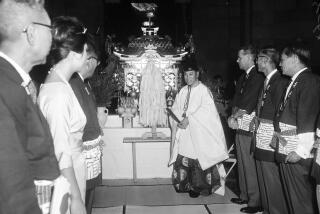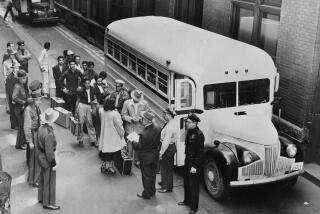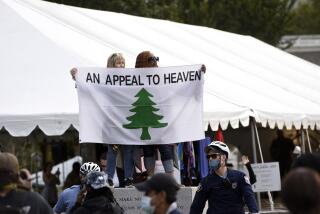At Los Angeles toppling of Junipero Serra statue, activists want full history told
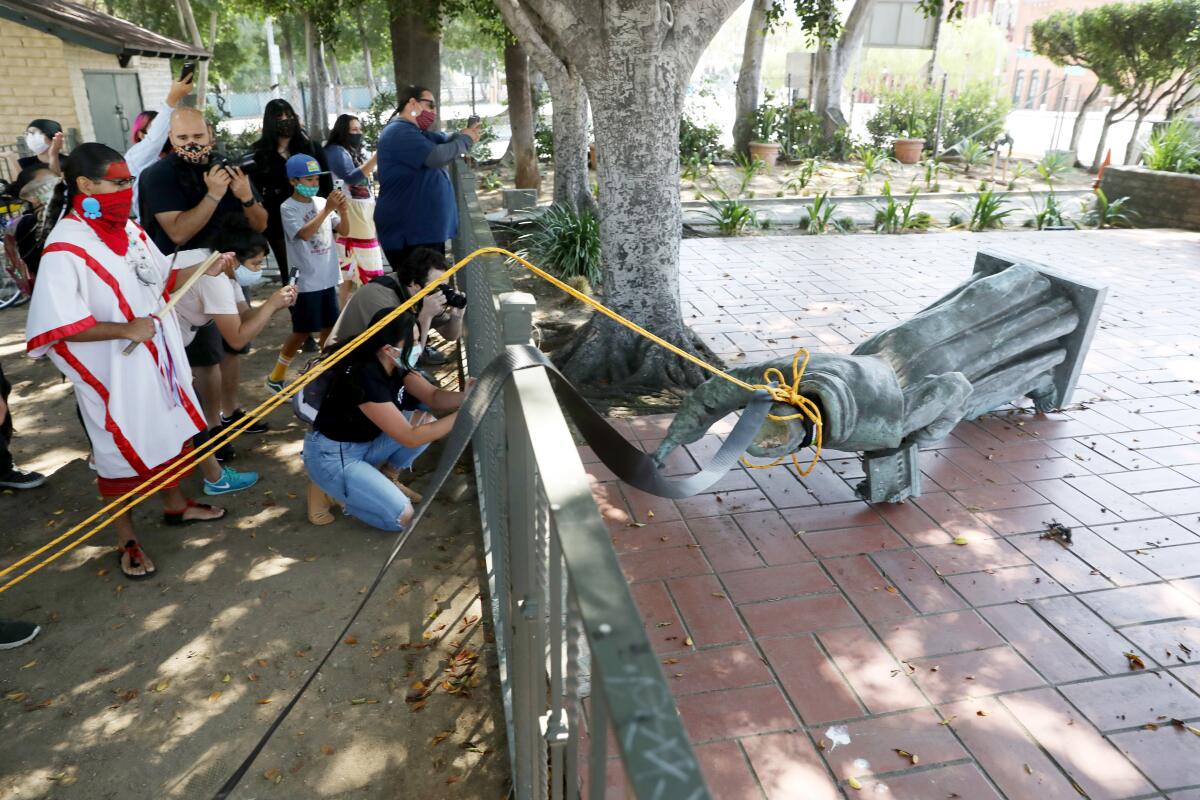
- Share via
It began with a prayer and ended with a loud clunk.
On Saturday afternoon, a group of about five dozen indigenous activists of all ages — children and elders included — gathered at Father Serra Park in downtown Los Angeles, just south of Olvera Street. As Tataviam/Chumash elder Alan Salazar burned sage and invoked the spirit of his ancestors, a group of young activists bound the nearby statue of Father Junipero Serra with ropes and tore him off his pedestal to chants of “Take it down! Take it down!”
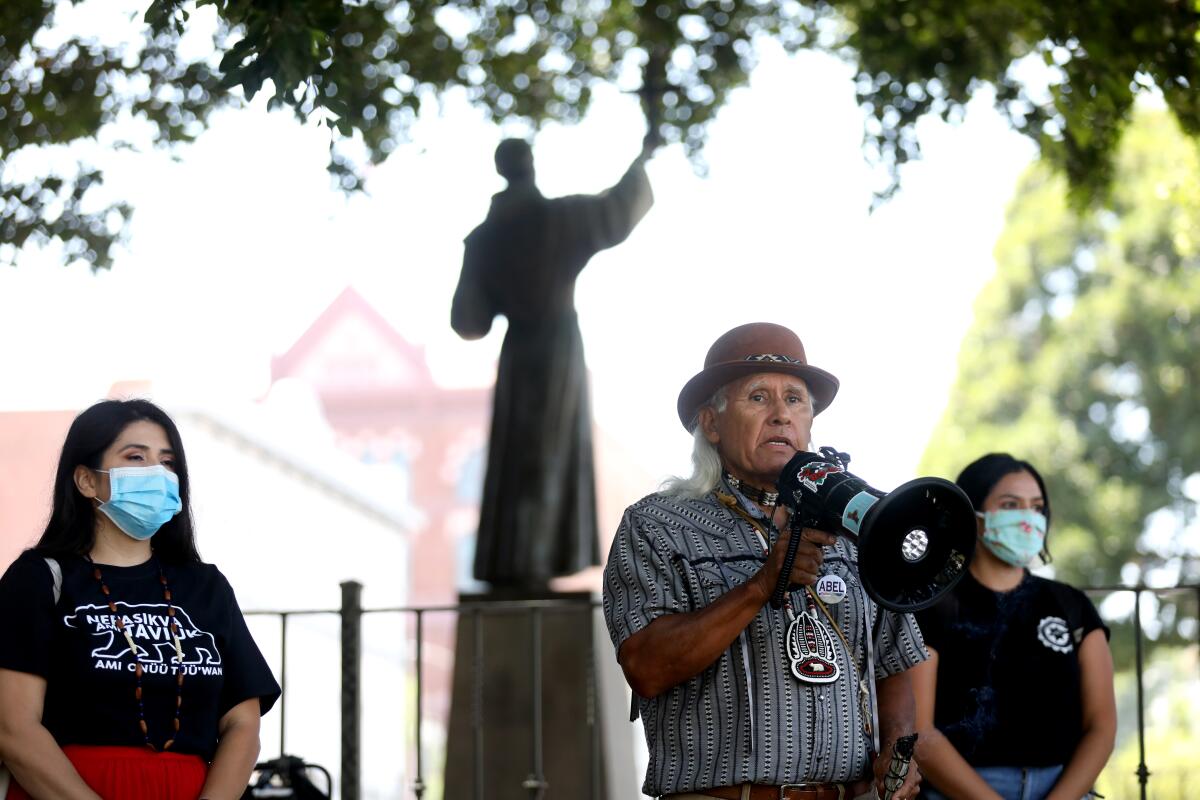
After the statue flew off its pedestal, the crowd erupted with shouts and drumming.
Statues of Serra, the 18th century Franciscan friar who served as principal architect of the California mission system during the era of Spanish colonization, have long been a flashpoint among indigenous activists. The mission system was designed to convert and acculturate the Native population to Catholicism and European culture, and this was done by confining them to missions up and down the coast. Natives who tried to escape were captured. Those who disobeyed were beaten. Indigenous beliefs and customs were banned.
Nonetheless, the Catholic Church — quite controversially — canonized Serra in 2015.
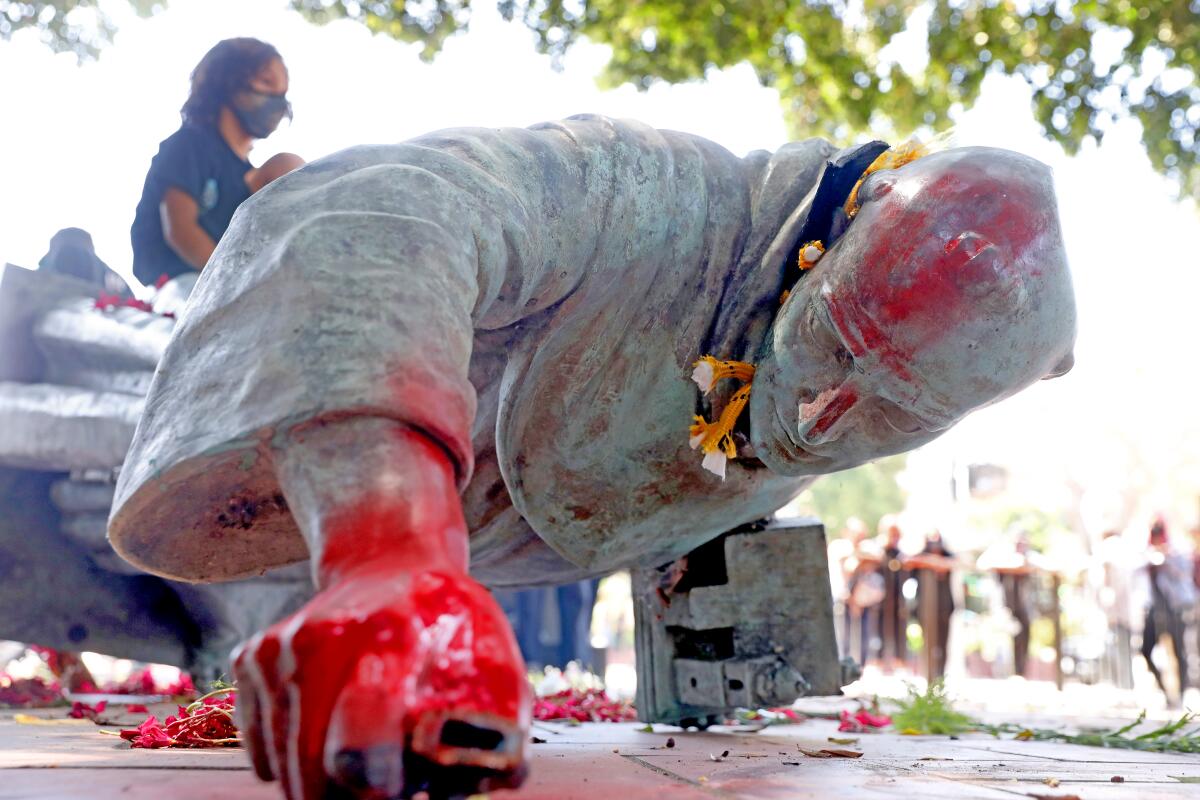
“Mass incarceration comes from the mission system,” says Joel Garcia, a cultural worker of indigenous Huichol background who was in attendance at Saturday’s toppling, and was part of a group of activists that pressed to have the statue of Christopher Columbus removed from Grand Park in 2018. “It’s important that what is going on doesn’t overshadow what happened in California.”
Salazar, a long-time activist in indigenous cultural causes, says that he wanted to offer the blessing for the toppling because of his own family’s history.
“My family was brought to the San Fernando mission in 1799,” he says. “So when I talk about Native people who lost their culture, their language and their lives — and were worked like slaves at the missions — I’m talking about my great-great-great-great-grandparents.”
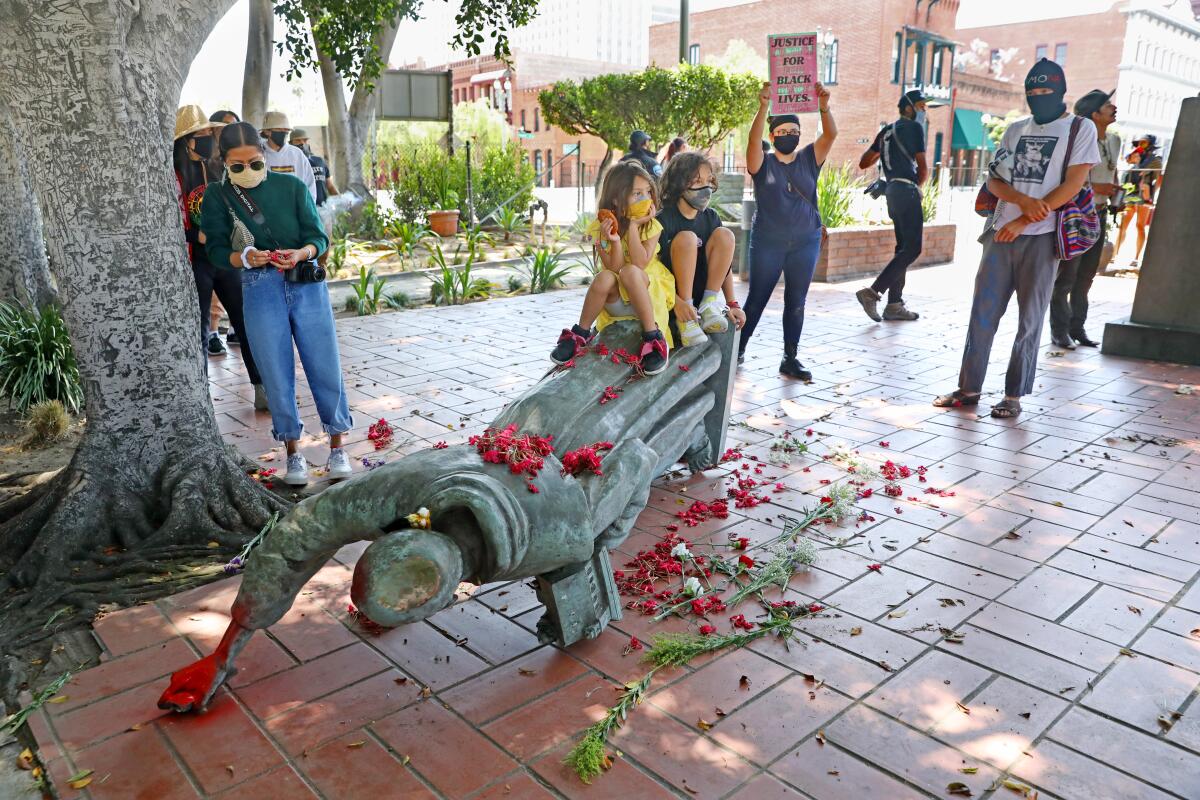
The statue of Serra, holding aloft a cross and bearing a model of a Spanish mission, was first installed in the downtown area by the Knights of Columbus in 1932. An early, undated photograph in the collection of the California Historical Society at USC shows it occupying a corner near Spring Street and Sunset Boulevard (now Cesar Chavez Avenue). For many years, the statue has occupied a somewhat indistinct perch in Father Serra Park, a small plot of land wedged between a freeway on-ramp and the Pueblo de Los Angeles Historical Monument.
Over the years, depictions of Serra have been protested and vandalized. In 2018, Stanford University removed Serra’s name from various campus buildings. On Thursday, officials in Ventura announced that they would remove the statue that stands in front of Ventura City Hall and place it in “a more appropriate non-public location.” On Friday, protesters in San Francisco toppled a statue of Serra in Golden Gate Park.
Ventura Mayor Matt LaVere, the Barbareño/Venureño Band of Mission Indians and Father Tom Elewaut issue a joint statement agreeing to move a statue of missionary Junipero Serra.
The Los Angeles action was peaceful — no police were present — and the vibe was more familial ceremony than protest.
After the statue was removed, a young activist named Chynna (she declined to give a surname) placed fruits on the statue’s plinth, turning it into an informal altar. Nearby, others laid flowers around Serra’s bronze form, which lay face-down on the pavement. Another group laid out an offering of fruit in the middle of the park, to which others added their own objects.
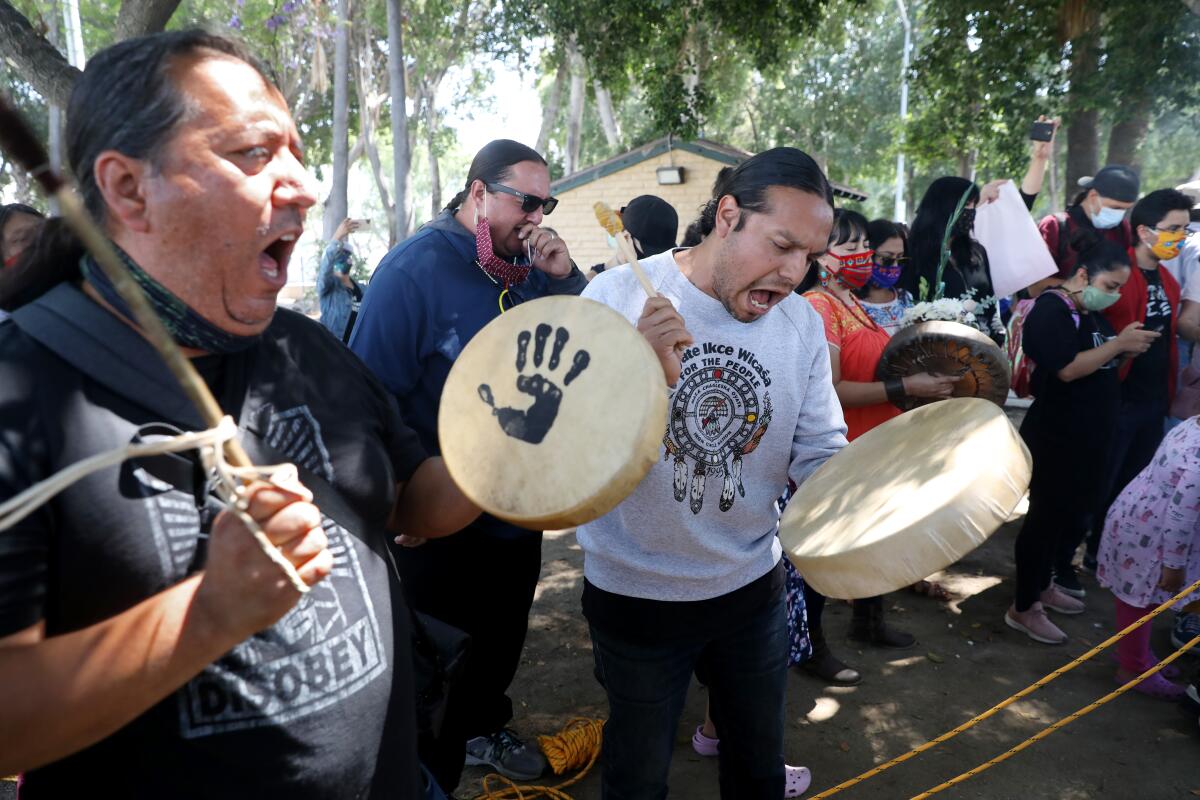
Ever Velazquez, an artist who was in attendance, says it is time to reframe the narrative around the Spanish missions.
“As a child growing up in Los Angeles and being forced to do a missions project in school — which was a bunch of lies,” she says, “I knew my history and I know why it was important, and that’s why it was important to bring the families and the children here.”
In a statement issued via email on Saturday afternoon, organizers of the action (a loose group of unnamed artists and activists) say they see the toppling as a beginning, not an end.
“It is time for reconciliation and with that, it is time for the WHOLE truth, all sides of the history need to be told,” reads the statement. “Not just for us, but for future generations.”
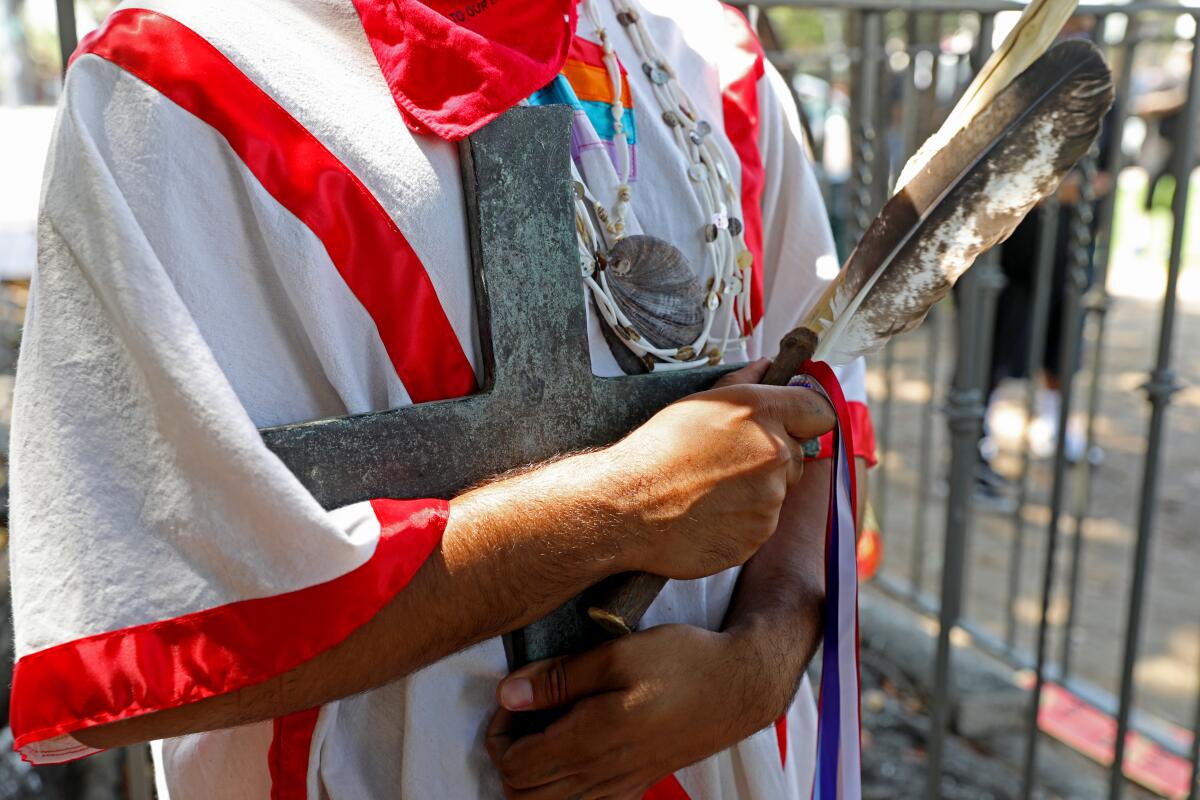
More to Read
The biggest entertainment stories
Get our big stories about Hollywood, film, television, music, arts, culture and more right in your inbox as soon as they publish.
You may occasionally receive promotional content from the Los Angeles Times.
